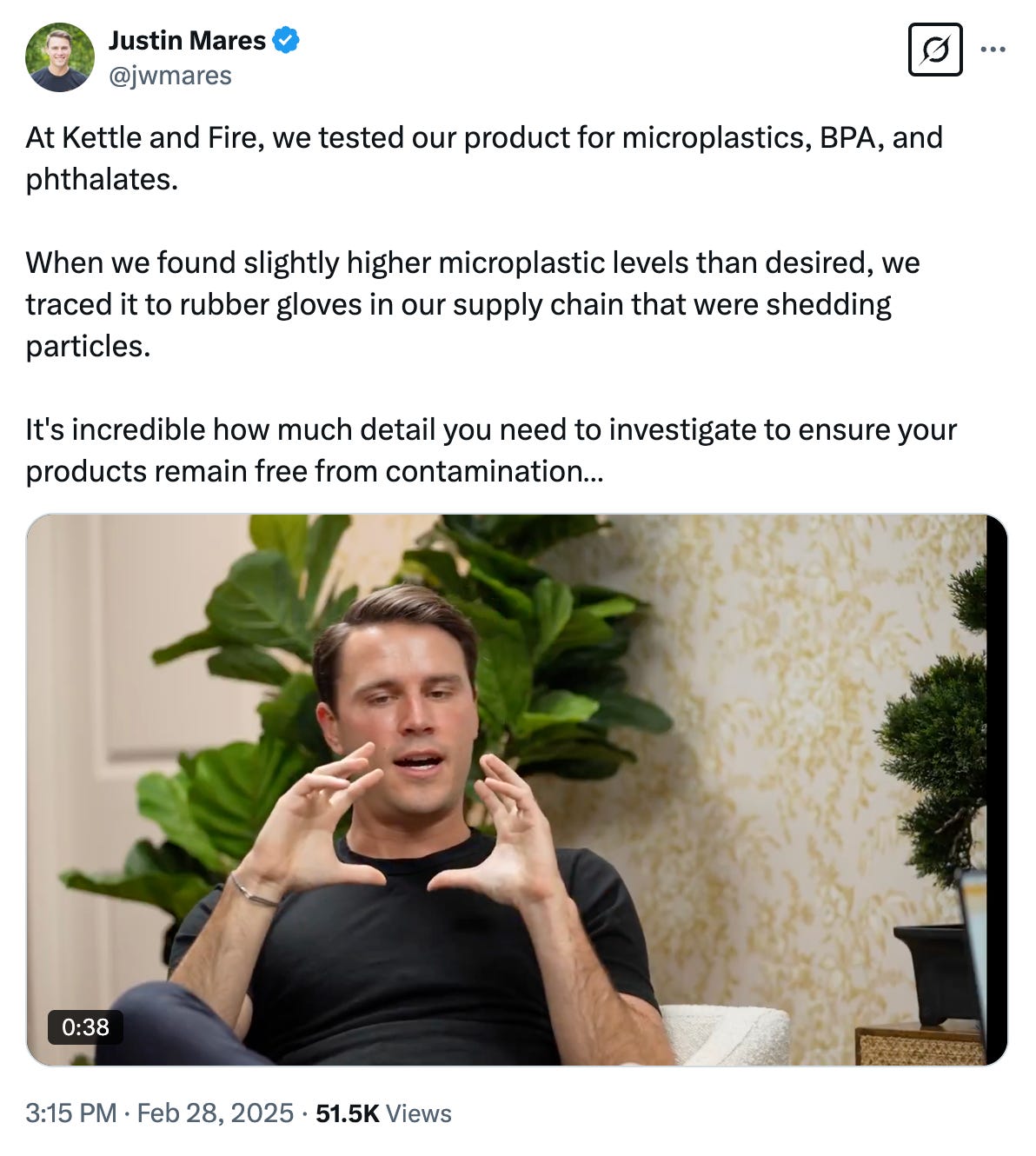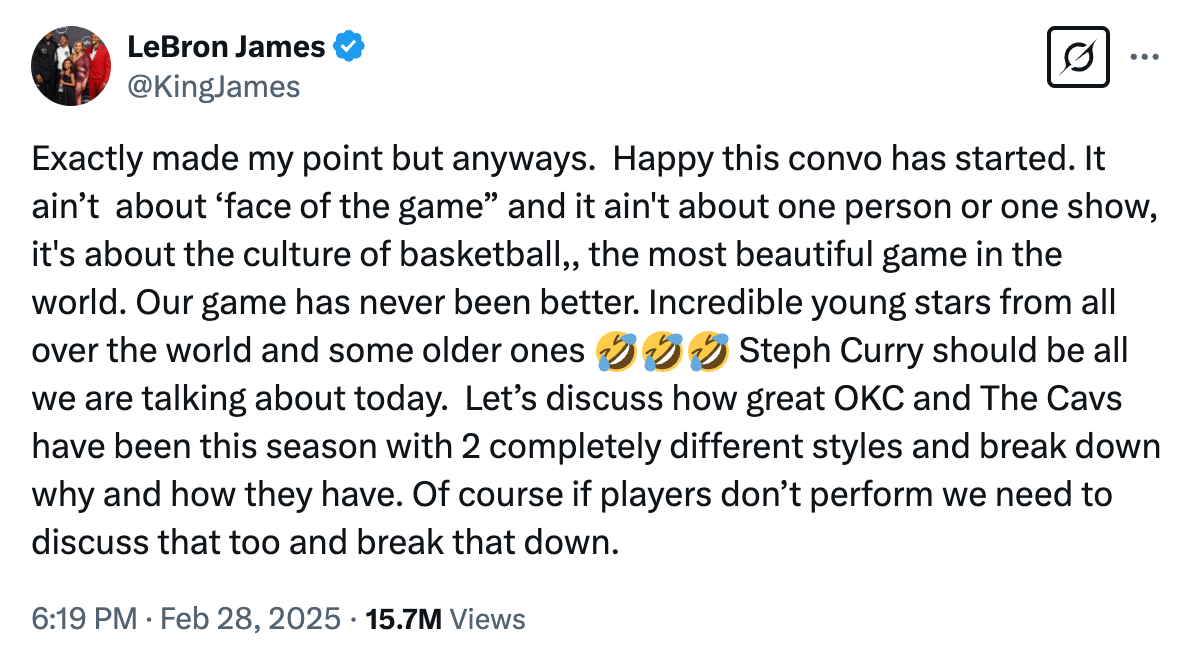What I Read This Week…
Venture capital in 2024 held steady but didn’t return to 2021 levels, U.S. agricultural exports have fallen to a deficit, and board certification exam scores are correlated with patient survival rates
Read our Deep Dive: The Current State of AI and Follow-Up Conversation with Sina Sojoodi
Caught My Eye…
Venture capital in 2024 held steady but didn't return to 2021 levels, with U.S. firms collecting $76.1 billion (the lowest since 2019) across 508 new funds. Established players received most of the $76.1 billion, with the top 30 funds securing 75% of all capital and just nine funds taking 46%, while Andreessen Horowitz alone obtained about 10%. This is a sign of "flight to quality," where LPs choose established firms rather than newcomers as they wait for returns from earlier investments. Investment activity showed some improvement with 15,260 deals worth $209 billion total, a 29% increase from 2023, but AI companies dominated this growth, representing 29% of all deals and 46% of the money invested. Companies generated exits worth $149.2 billion across 1,259 transactions – 10% more than 2023 – but just 21 large exits over $1 billion accounted for 42% of that value. Despite interest rate cuts providing some optimism, many large startups elected to remain private rather than risk lower valuations in public markets. Meanwhile, regulatory scrutiny limited acquisitions of VC-backed companies, reducing the kind of major deals that would return capital to investors and encourage more exits in public markets.
U.S. agricultural exports have fallen to a record deficit as food imports increase to unprecedented levels. The agricultural trade deficit is projected to reach $49 billion this year according to USDA data, as the U.S. transitions from its historical position as a food export powerhouse. American imports of agricultural products are forecast to climb 6.5% to $219.5 billion in the year ending September, driven largely by increased shipments of avocados, orange juice, and coffee. Meanwhile, exports are expected to decline 2.2% to $170.5 billion as traditional American crops lose market share to global competitors. This shift stems from rising consumer demand for year-round fresh produce and specialty foods that cannot be produced domestically in sufficient quantities. Brazil has surpassed the U.S. as the leading exporter of soybeans, corn, and cotton, while Russia has overtaken America as the world's top wheat supplier. Industry leaders are responding by focusing on value-added products like ethanol and emphasizing sustainability certifications to differentiate American goods in an increasingly competitive global marketplace, where quality over quantity and environmental credentials are becoming key selling points that command premium prices from discerning international buyers.
A recent study indicates that internal medicine board certification exam scores are correlated with patient survival rates. The research found that patients of newly trained physicians who scored in the top 25% on their board certification exam had an 8% lower risk of dying within seven days of hospitalization compared to patients of doctors scoring in the bottom 25%. Similarly, these physicians' patients had 9% lower readmission rates following discharge. The study analyzed nearly 7,000 internal medicine physicians treating Medicare patients during 455,000 hospitalizations from 2017 to 2019, comparing outcomes within the same hospitals to control for other variables. The researchers found no correlation between patient outcomes and physicians' milestone ratings, which are periodic assessments of knowledge and skills conducted throughout residency training. This evidence provides reassurance that the comprehensive day-long board exam, which tests medical knowledge and clinical judgment through approximately 240 case-based multiple-choice questions, measures competencies that translate directly to improved patient care. These findings validate the certification process as a meaningful indicator of physician quality, beyond just being a professional credential required by many hospitals and healthcare systems.
Other Reading…
Apple’s Artificial Intelligence Efforts Reach a Make-or-Break Point (Bloomberg)
Rebuilding Alexa: How Amazon is Mixing Models, Agents and Browser-Use (VentureBeat)
Meta Plans Stand-Alone AI App (Tech Xplore)
Nvidia GPU on Bare Metal NixOS Kubernetes Cluster Explained (Fang-Pen’s Coding Note)
AI is Killing Some Content Companies, Yet Others are Still Growing (Elena Verna)
Mixue Ice Cream and Tea Becomes World’s Biggest Food-and-Beverage Chain (WSJ)
On X…





Couple o thoughts:
* With regards to ag exports, US should start looking into vertical farming options that can be located pretty much anywhere. Bring the produce closer to the consumer and create environments where those specialty crops can grow year round. Lot of empty buildings built for climate control efficiency in cities right now.
* 2 significant issues with crypto (I'm sure people are thinking about this; I'm an idiot with a keyboard, but it seems obvious enough to say):
1. The whole purpose of crypto was to be an independent and self-governing monetary system. By pegging it to the dollar, you remove all that. Pair that with Trump/Melania/Milei coins, and now the public equates the words "scam" and "crypto"—big PR and governance problems.
2. None of the cryptos in our crypto reserve are quantum ready/proof/whatever. Microsoft, Google, IBM, Amazon, etc, all have quantum chips in the pipeline. Satya seems to think that theirs is a breakthrough ready to bring quantum computing to us within 5 years. If that happens, every crypto in our reserve is toast (yes, they can modify their foundations, but that is not easy, and it destroys the current history unless there's some back propagation and duplication of the existing chain). Building a crypto policy using cryptos already behind the curve (elliptical curve joke...ba dum pssh) is poor planning. Having said that, some cryptos are quantum ready (Algorand's blockchain is quantum proof according to NIST, QRL, etc) so having a digital policy for the US is possible and should be encouraged.
* Basketball is beautiful, but only people who love basketball care about the Xs and Os (same with every other sport). If you want casual people to love the game like people did in the 80s/90s, you need rivalries, underdogs, and people overcoming obstacles. People love sports because they get to live their dreams through them, and they provide an escape from reality. Make the game physical again. Bring back the hand check, stop giving out technical fouls for stare downs, and stop disrupting the game with foul calls every two seconds. We loved Allen Iverson not just because he was a phenomenon talent, but also because he got knocked down repeatedly and he never complained. He just got back up again; he refused to give up. We loved Jordan because he had to fight through Bird, Magic, and Isaiah. We loved it when the Bulls played the Knicks because they HATED each other. People love football because it's brutal, and people get to think they're tough while they watch it. It used to be that way with basketball. Now, you have players with no loyalty to a city, chasing titles by joining other stars, and feigning contact to draw fouls. There's no dreams in that, there's the thinking "I'm not that guy" and a turning off the game.
I’d be interested in seeing more info on the doc board scores and outcomes. It sure would be handy if that was publicly available. I bet you’d have obscene waiting lists for certain docs…